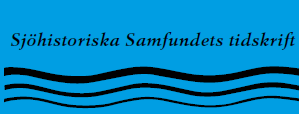Forum navale is the journal of the Swedish Society for Maritime History, with the aim of contributing to the field of maritime history, especially Swedish, in all maritime related matters. The journal accepts scientific articles, which are subjected to double-blind peer review, as well as popular science articles. Learn more >>
Manuscript preparation
Writing guide for submissions
Article submissions to Forum navale are divided into two categories: scientific articles which are subjected to double-blind peer review with at least two reviewers, and popular science articles which are subjected to editorial review. Please indicate in which category the submission belongs.
Authors of published articles will receive, free of charge, 10 copies of the journal featuring their article. Pictures or suggestions for illustrations are welcome. Forum navale reserves the right to publish submissions on the Swedish Society for Maritime History’s website, http://www.sjohistoriskasamfundet.se.
Submissions written in Swedish should include a short English summary of between 1/2 – 2 pages in length. Forum navale will provide a proof reading service of the English summary and can, in exceptional circumstances, also assist in the translation of said summary. Authors are also requested to provide a short biography of between 3 – 10 lines (name, year of birth, title, current employment/work, area of research and latest publications).
Commentaries on maritime art, documents, symbols and artifacts should range between 1500 and 2000 words. Commentaries are subject to editorial review.
Book reviews are to include a preamble with the name of the author, title of book, publishing town, the publisher, year of publication, page number and edition of the book that is reviewed.
All contributions should be submitted electronically (in Microsoft word format) via the journal's online tracking system. Create and account or login here >>
Instructions for footnotes and bibliography
Footnotes should be inserted after the text (use the function ’Insert footnote’ in your word processing software). Footnotes are to be positioned after a full stop. The only exception to this occurs when there are several footnotes within a sentence; then they are to be positioned within the sentence. Articles with bibliographies should reference them in the footnotes in abbreviated form (author, year of print, page) with a full description in the bibliography. Examples of footnotes:
- Widén 1990, p. 33, 55.
- Johansson 1980, p. 55-89.
- Johansson 1980, p. 55 ff.
Bibliography: Titles of books, newspapers and journals in the bibliography should be in italics. Titles of essays, and essays that are part of anthologies etc should have quotation marks. Example:
- Johansson, Ulla, ”Fattigvård i Sverige under 1700-talet”, i:Oppdaginga av fattigdomen. Social lovgivning i Norden på 1700-talet. Oslo 1982
- Attman, Artur,Den ryska marknaden i 1500-talets baltiska politik, 1558-1595. Lund 1944
- Gill, Conrad, “The Affair of Porto Novo: An Incident in Anglo-Swedish Relations”,The English Historical Review, vol. 73, No 286, January1958
Some basic points on style
Numbers. Years are written e g 1956; high numbers are written with a space e g 1 956 m. Low numbers are written in full (one, two, ten, nineteen), with the exception of percentages, measurements or lists of numbers. Dates should be written in the following format: 10 January 1950; never 10/1 1950.
Abbreviations should be avoided if possible. If using unusual abbreviations always include a list of abbreviations and place the list in front of the bibliography and list of sources.
Quotes: long quotes of more than three lines, should be separated from the main text and indented. Quotation marks are not necessary and the font size should smaller than the main text. Omitted words should be shown as three full stops inside square brackets: […].
Ship names are to be written in italics without quotation marks.



